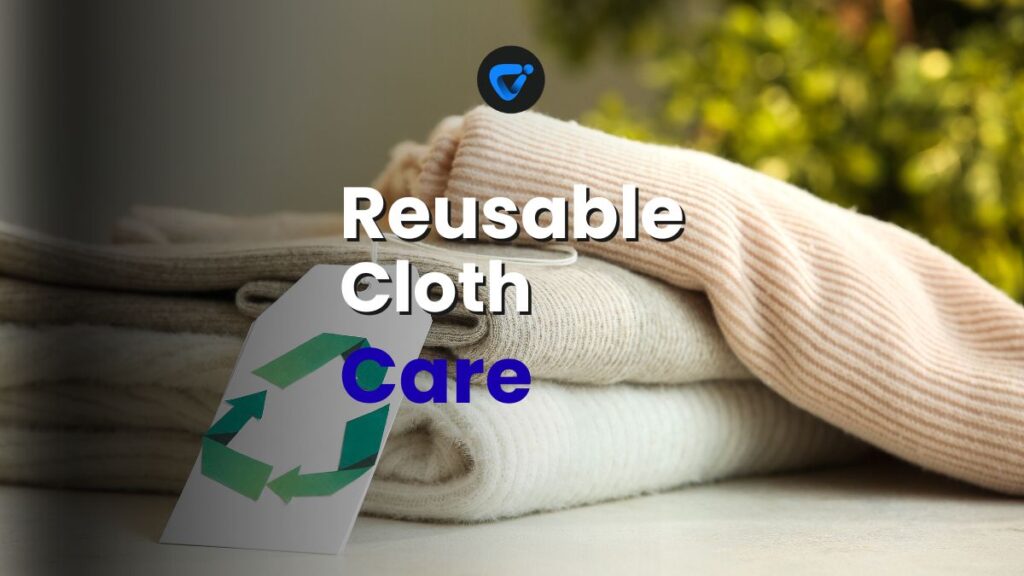
That fresh feeling your home gets after a deep clean is even more satisfying when chores are eco-friendly. Swapping to reusable cleaning cloths brings sustainability into daily routines while lowering costs. It’s not just about wiping—these cloths change how we think about home care and waste.

Composting Basics for Everyday Kitchen Scraps
Turn scraps into soil! Learn composting basics to recycle kitchen waste and create nutrient-rich compost at home.
More people realize the impact of single-use paper towels, so thoughtful choices like reusable cleaning cloths genuinely matter. Eco fabrics make the swap easy, with absorbency and lasting power rivaling disposables. Understanding the best care and materials ensures your cloths stay fresh, effective, and sustainable.
This article shows practical ways to maximize your reusable cleaning cloths and shares which eco fabrics deliver the best results. You’ll discover care techniques, material comparisons, troubleshooting advice, and at-a-glance lists. Every section aims to advance your cleaning knowledge for a greener home.
Choose the Best Eco Fabric: Know What Works for Each Job
Choosing the right eco fabric helps reusable cleaning cloths excel at each household task. Material matters when tackling spills, dusting, or polishing, so matching cloth type to use-case saves both time and effort.
Bamboo, organic cotton, hemp, recycled microfiber, and linen are high-performing fabric choices. Each brings unique strengths—whether that’s quick drying, tough scrubbing, or a soft finish. Let’s look closer at fabric performance and how each can fit a real home routine.
Why Bamboo Cloths Stand Out in Wet Messes
Bamboo’s natural absorbency makes it a quick responder for countertop spills. You can see water pulling into the fibers almost instantly. After wringing, the cloth air-dries in half the time a cotton rag would, ready to use again sooner.
In a kitchen trial, wiping sticky fruit juice with a bamboo cloth took less effort than with a cotton-recycled blend. The slim profile lets you ring out nearly all the liquid, reducing funky damp smells. Keep bamboo cloths near the sink for fast-turnaround jobs.
Bamboo also resists bacteria growth better than most synthetics. When you’re cleaning around food, that matters. After use, shake out crumbs and hang to dry where air circulates. Weekly hot washes keep things fresh.
Organic Cotton: The Everyday Hero for Dust and Routine Wipes
Organic cotton’s slightly rougher texture lifts dust from furniture without scattering particles into the air. Try using a damp organic cotton cloth for allergen-sensitive cleaning. Swipe gently across wood or plastic, and you’ll see dust cling to the weave instead of floating away.
For polishing glass, organic cotton doesn’t leave lint trails like lower-quality synthetics sometimes do. Fold the cloth in quarters, use one side until it’s saturated, and flip to keep surfaces streak-free. This method stretches cleaning time and gets the most from each cloth.
Stains come out easily in a hot wash with gentle soap, so organic cotton cloths stay bright after many uses. Designate different colors for kitchen and bathroom to avoid cross-contamination at a glance.
| Eco Fabric Type | Best for Job | Key Strength | What to Do Next |
|---|---|---|---|
| Bamboo | Kitchens, spills | Absorbency, quick-dry | Stock 4–6 near sinks; hot wash weekly |
| Organic Cotton | Dust, glass, everyday wipes | Gentle scrubbing, easy stain release | Designate by room with color-coding |
| Hemp | Scrubbing, outdoor use | Toughness, natural mildew resistance | Perfect for muddy boots or garden tools |
| Recycled Microfiber | Windows, screens | Polish without streaks | Keep dry for mirrors; dampen slightly for electronics |
| Linen | Drying, polishing silver | Quick-dry, zero lint | Finish wood or metal for a lasting shine |
Hemp Cloth Scenarios for Stubborn Grime
Hemp’s fiber density stands up to heavy-duty scrubbing—think baked-on oven spills or shoe scuffs on tile. A friend tackled a muddy pet paw print crisis in her entryway, using a hemp cloth moistened with all-purpose cleaner. It released grime without damaging grout.
Rough edges on hemp pull dirt from uneven surfaces like textured tiles or garden tools. After use, a rinse removes most dirt; just hang to dry in the sun for best effect. The earthy fibers resist mildew longer than most natural cloths.
Reserve hemp cloths for the jobs where strength matters, but avoid soft glossy finishes. Their coarseness could scratch delicate items—use a soft organic cotton or linen for polishing instead.
Recycled Microfiber: Streak-Free Shine
Recycled microfiber’s extra-fine filaments attract and hold more dust. When cleaning windows or mirrors, use light, overlapping strokes. The result? Shiny surfaces with zero lint or fuzz curls, making these cloths a favorite for final touches.
For electronics, a dry microfiber wipes away fingerprints without moisture. Switch to a slightly damp cloth on appliance screens, making sure no stray drops trickle behind casings. Handle by edges and let air-dry to avoid smell or waterlogged backing.
Don’t launder microfiber with cotton, which clings to its static charge and can undermine its dust-trapping edge. Wash separately and skip fabric softener for best results.
Washing Routines That Prolong Cloth Life and Boost Effectiveness
Regular, thoughtful washing prevents buildup and protects reusable cleaning cloths, letting them stay durable and hygienic for months or years. Routine maintenance, not guesswork, keeps fabrics absorbent and smelling clean, without harsh chemical residue.
Set a washing schedule for your cleaning cloths, just as you would for bath towels. Routine timing keeps mildew away and reduces surprise odors that signal hidden bacteria. Let’s break down best habits for maximizing your cloths’ potential.
Bi-Weekly Hot Wash Plan
Bi-weekly hot washes (at least 140°F) remove greasy buildup from reusable cleaning cloths. For kitchen cloths, use a fragrance-free detergent—skip bleach, as it degrades fibers. A mesh laundry bag stops hooks or zippers from snagging.
- Rinse after every use: Before tossing in the bin, remove food, grease, or debris. This step limits odor and simplifies laundry later.
- Separate by fabric: Group cloths by material—never wash microfiber and cotton together. This prevents static stick and extends each cloth’s cleaning power.
- Air-dry in sunlight: Whenever possible, line dry in full sunlight. UV rays help deodorize and sanitize without compromising softness.
- Use gentle detergent: Avoid additives, brighteners, or heavy scents. Stick to pH-neutral cleansers for plant-based fabrics, which protects their threads and performance.
- Track by color: Use color-coded baskets for different rooms or tasks, so you never mix up kitchen with bathroom cloths. Label baskets for helpers.
A predictable care routine means cloths are always ready for cleaning. If you skip hot washing, stains set fast, and reusable cloths get stiff. Consistency prevents this.
Quick Tips to Tackle Stains Before They Set
Treat fresh stains on reusable cleaning cloths immediately with a dab of castile soap and hot water. Press, don’t rub, to avoid pushing dirt deeper. Rinse completely before drying since leftover soap can cause stiffness and reduced absorbency.
- Address stains quickly: Immediate attention keeps the cloths clean and odor-free longer.
- Avoid fabric softeners: These leave behind residue that diminishes scrubbing strength and absorbency on eco fabrics.
- Pre-soak tough stains: For persistent marks, soak cloths in a solution of one part white vinegar to three parts water for thirty minutes, then launder as usual.
- Line dry when possible: Sun exposure acts as a natural disinfectant and fades light stains before they worsen.
- Check before storing: Inspect for leftover debris or moisture; leaving damp cloths balled up leads to mildew and shortens lifespan.
Follow these steps to prevent frustration and keep cloths working like new. Taking action is easier than coping with a smelly, stained pile of rags later.
Simple Storage Systems to Keep Cloths Clean and Accessible
Effective storage systems put reusable cleaning cloths within reach and keep them sorted for every job. Well-organized areas encourage family members and guests to use the right item for each room, minimizing accidental cross-traffic of germs.
Try zone-based baskets near sinks, under bathroom counters, or on utility shelves. Think of them like mini toolkits: the right cloth grabs attention with color-coding or labels, customized for kitchens, bathrooms, and general surfaces.
Visibility and Airflow: Hooks, Hangers and Bins
Install wall hooks or hanging racks to speed air-drying and display clean cloths. Someone walking by sees what’s available, so it’s easier to grab and go for quick jobs.
See-through mesh bins prevent musty buildup inside cabinets. Place one by the mudroom entry to catch cloths used on muddy shoes or wet paws. Just toss in, and wash contents together every few days.
If you fold fresh cloths Marie-Kondo style, stack them vertically in shallow drawers or baskets. This keeps edges crisp, and you can instantly spot when you’re running low without digging through a heap.
Labeling and System Prompts for Easy Sharing
Clear labeling—such as “Glass Only,” “Kitchen Spills,” or “Bathroom Surfaces”—removes guesswork for everyone who cleans in your home. Use permanent marker on tags or printable adhesive labels for baskets.
For busy households, consider a laminated checklist on each bin showing where used cloths should go and the next wash date. This sets up gentle reminders and helps visiting friends or cleaners follow your hygiene system, too.
Backup cloths in a pop-up bin under the kitchen sink make it seamless to swap out between tasks. When one gets dirty, just grab the next; no excuses for using the wrong one and contaminating more areas.
Building Durable, Eco-Friendly Cleaning Habits
Reusable cleaning cloths make sustainable routines second nature. Their variety of fabrics, built-in durability, and smart storage systems help families clean more effectively while generating far less waste than disposables. Little choices add up to less clutter, fewer messes, and bigger impact.
With regular care, sorting, and washing, these cloths function as long-term allies in home maintenance. You’ll see savings over time and enjoy a sense of order, knowing each cloth is prepped for its ideal use and cleaned correctly.
The real win is simplicity: streamlining cleaning tasks, cutting down on waste, and keeping homes both hygienic and kind to the environment. Start with a single, well-labeled basket—and see how the rest falls into place.
Frequently Asked Questions
Keep at least six to eight reusable cleaning cloths per high-traffic area (kitchen, bathroom, and general surfaces). This allows you to rotate cloths, always have a clean backup, and avoid mixing tasks between rooms.
Grease and protein-based stains—like egg yolk or oily sauces—cling tightly to fibers. Pre-soak these cloths in hot water with a little vinegar and castile soap before laundering for best results.
Cloths left damp in piles may support bacteria growth. Always rinse, wring out, and air-dry immediately after each use. Weekly hot machine washes (140°F or above) disinfect and prevent lingering damp odors or bacteria.
Recycled microfiber repurposes existing synthetic materials, reducing landfill waste. However, natural fibers like bamboo or cotton are biodegradable. Choose by task—microfiber for glass, bamboo and cotton for all-purpose cleaning—to maximize eco-benefits.
Label or color-code reusable cleaning cloths for specific areas. Store kitchen, bathroom, and glass cloths separately in marked bins or shelves so each type is easily grabbed and always used in the right spot.

Lemon Peels: The Hidden Powerhouse
Don’t toss those peels! Discover how lemon power can naturally clean, deodorize, and shine every corner of your home.


